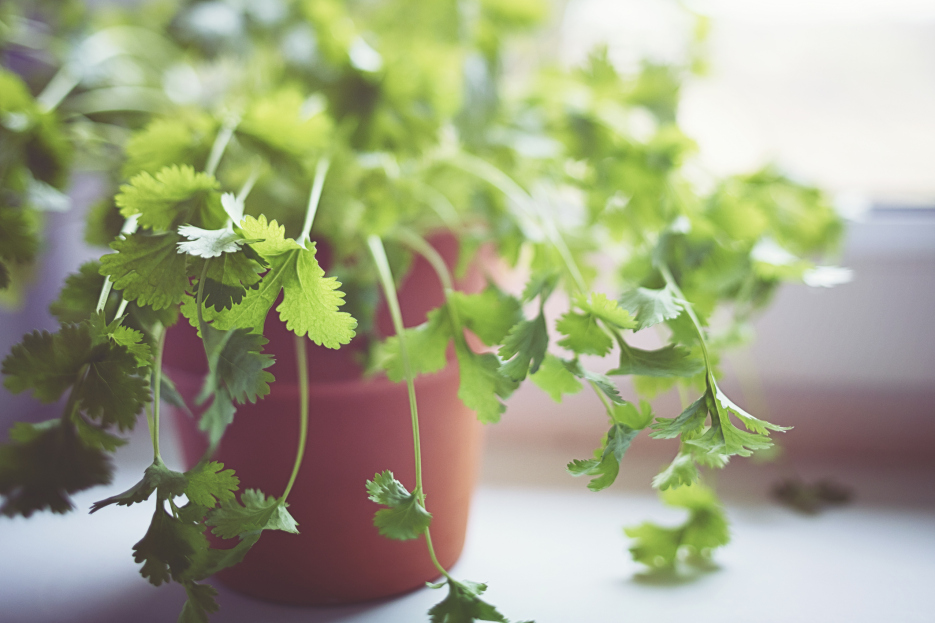
Cilantro, often called coriander in different regions, serves two functions as an herb. The leaves are known as cilantro, whereas the seeds are referred to as coriander. This herb is popular in numerous culinary traditions, imparting a bright, zesty taste to recipes. Cultivating cilantro can be challenging; however, with proper attention, you can savor fresh leaves for an extended time. Here’s a comprehensive guide to successfully growing cilantro.
Cilantro prefers full sun but can tolerate some partial shade, especially in hot climates. Ideally, the plant should receive 4-6 hours of direct sunlight daily. If you're grown indoors, make sure it’s near a bright window or provide supplemental light with grow lamps. Too much sun in hot weather can cause the plant to bolt (go to seed) quickly, so provide shade during the hottest part of the day if needed.
Cilantro isn’t a heavy feeder, but it benefits from a balanced fertilizer once or twice during its growing season. Use an organic fertilizer with an equal N-P-K ratio (such as 10-10-10) to promote leaf growth. Avoid over-fertilizing, as too much nitrogen can cause the plant to grow more leaves at the expense of flavor.
Cilantro likes consistent moisture. Water when the top inch of soil feels dry, making sure the soil remains moist but not waterlogged. Deep watering every few days is usually sufficient, especially during dry periods. If growing in containers, ensure the pot has proper drainage to avoid soggy soil.
Cilantro thrives in well-draining, fertile soil with a pH between 6.2 and 6.8. It’s best to plant cilantro in loamy or sandy soil that doesn’t retain too much water. When grown in containers, use a standard potting mix enriched with compost. The plant does not need to be re-potted often, but if it becomes root-bound in a small pot, it’s best to transplant it into a larger one.
Cilantro prefers cooler temperatures, thriving in a range of 50°F to 85°F (10°C to 29°C). It’s a cool-season herb that tends to bolt quickly when temperatures rise above 85°F. To extend the growing season, plant them in the cooler months or provide afternoon shade in warmer climates. If temperatures drop below 50°F, they can still survive, but it will grow slower.
Cilantro enjoys moderate humidity levels and does well in typical garden or indoor conditions. It doesn’t require additional humidity indoors but appreciates good air circulation. Be careful not to overwater in humid climates, as this can lead to root rot or fungal diseases.
Cilantro is typically grown from seeds, as it has a deep taproot that doesn’t transplant well. Sow seeds directly into the soil about ¼ inch deep, and thin seedlings to about 6 inches apart once they’re a few inches tall. Cilantro seeds can be planted successively every few weeks to ensure a steady supply throughout the growing season. Cilantro is fast-growing, and you can start harvesting leaves within 4-6 weeks of planting.
Pruning cilantro is essential to keep the plant from bolting and encourage more leaf growth. Harvest the outer leaves regularly, cutting them at the base of the stem. Remove any flower stalks as soon as they appear to prevent the plant from going to seed, although if you wish to collect coriander seeds, allow the plant to flower and set seeds. Be careful not to prune more than one-third of the plant at a time to avoid stressing it.
Cilantro can be affected by common garden pests like aphids, leaf miners, and spider mites. Inspect the leaves regularly for signs of infestation, such as curling or discoloration. Use neem oil or insecticidal soap as a natural remedy. Bolting is a common issue, especially in hot weather, causing the plant to flower and go to seed quickly. To prevent bolting, plant them in cooler weather and trim flower stalks as they appear.
Yes, cilantro is non-toxic to cats and dogs. It’s perfectly safe for pets to nibble on their leaves, and it even has some mild digestive benefits. However, as with any plant, it’s best to keep your pets from overconsuming it.
Cilantro prefers full sun but can tolerate partial shade, needing about 4-6 hours of sunlight a day.
Water when the top inch of soil is dry, ensuring the soil stays consistently moist but not waterlogged.
Cilantro grows well in well-draining, fertile soil with a pH of 6.2 to 6.8.
Yes, cilantro can be grown indoors as long as it receives sufficient light, preferably from a bright window or under a grow light.
Cilantro is typically grown from seeds sown directly into the soil, as it doesn’t transplant well due to its deep taproot.
Cilantro prefers cooler temperatures between 50°F and 85°F (10°C to 29°C).
Harvest leaves regularly and trim any flower stalks that appear. Plant cilantro in cooler weather to prevent early bolting.
Cilantro may attract aphids, leaf miners, and spider mites. Regular inspection and organic pest control can help manage infestations.
Cilantro benefits from a light application of balanced fertilizer once or twice during the growing season.